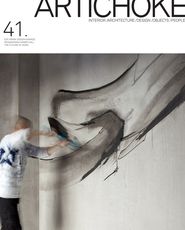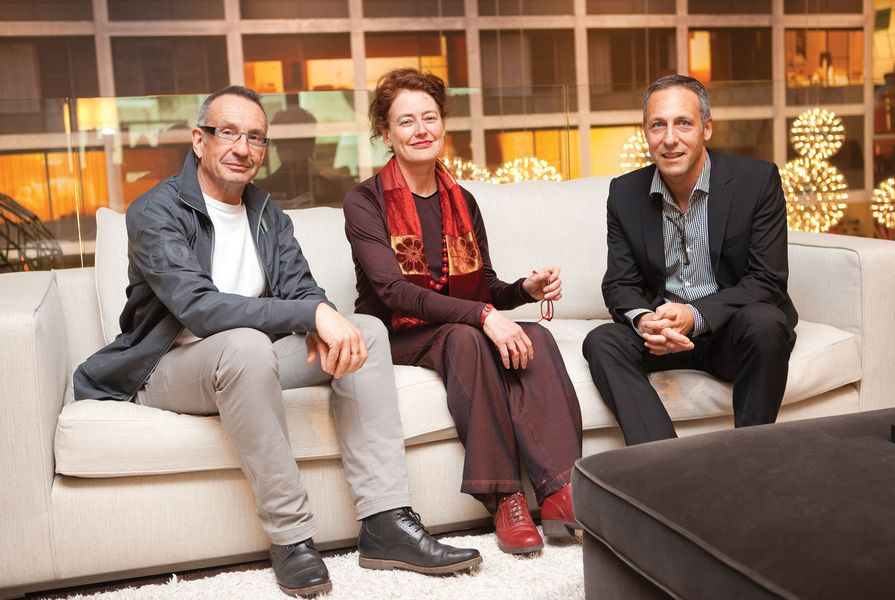How is art integrated into architecture and interior design? Does hanging an artwork in a space constitute integration, or does the artwork need to be part of the fabric of the space? Should the artwork be specifically commissioned or selected from existing work? These questions and more were raised at Artichoke Night School No. 8 in Sydney. As a speaker at the session and a design practitioner who has been involved in the integration of art and design, I have observed that there are two main approaches to this integration: that of the curator and that of the designer.
The curatorial approach (articulated by curator Ewen McDonald through a presentation of his work with Allens Linklaters) tends to integrate artworks that were not specifically commissioned for a particular space. Artworks are hung so they relate to the scale, use and location of the space, and the curator seeks to identify and create relationships between the artworks and other elements of the space. This approach can be used when dealing with existing collections, and when integrating historic and contemporary works, or works from a wide range of artists. This flexible approach allows for change over time and the integration of new works. It is used in interior projects for corporate clients, and often involves exploring the history and philanthropy of a company.
Pharmacopeia of Burramatta by Gary Carsley features in the lobby of the Department of Attorney General and Justice in Parramatta by Bates Smart.
Image: Tyrone Branigan
The designer’s approach focuses on the integration of an artwork in a particular space, and often uses site-specific commissions to achieve the intended result. These commissioned artworks frequently require a large team to deliver the artwork, including an art consultant, an artist, the architect or interior designer, a fabricator and a building contractor. The artworks may aid in interpretation of the building, client, site or history, and enrich the experience of a place. This approach sometimes results in large, high-profile public commissions – a topic that artist and art consultant Jennifer Turpin provided insight into through a presentation of the work of Turpin + Crawford Studio, which focused on the commissioning of artworks for Central Park, a redevelopment of the old Carlton and United Breweries site.
An example of the designer’s approach, which I discussed at Artichoke Night School, is the lobby of the Department of Attorney General and Justice in Parramatta, where Bates Smart integrated a two-storey artwork into the space. This commission commenced with the designer recommending a large artwork on glass in the concept design. An art consultant, Virginia Wilson, was commissioned to write the brief and a competition was held, from which a selection of artists was short-listed. The winning submission, judged by a team that included the client, was an artwork by Gary Carsley that reinterpreted the original Parramatta Parklands beyond the site in a pixelated and rendered work that featured faux 1950s timber laminate and which was screen printed into large glass panels and installed on the wall. The result is an artwork that is so integrated and powerful that it has transformed the space and its relationship with the surroundings. At the opposite end of the scale, in terms of expense and planning, is a small courtyard wall in a student housing project, into which a delightful graffiti artwork has been incorporated.
Clearly there are many approaches to successfully integrating art with architecture and interior spaces. The question is, what is the value of integrating artwork when in today’s world, designers can easily specify an ever-increasing array of decorative surfaces or create their own? The answer lies in the belief that the world, and its buildings, can be enriched through the integration of the work of artists whose world views differ from those of the designers.
The Artichoke Night School series is presented by Artichoke magazine in partnership with Space Furniture. Night School No. 8 was held at the Space Sydney showroom.
Source

Discussion
Published online: 1 Nov 2012
Words:
Philip Vivian
Images:
Neil Fenelon,
Tyrone Branigan
Issue
Artichoke, December 2012


















